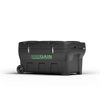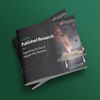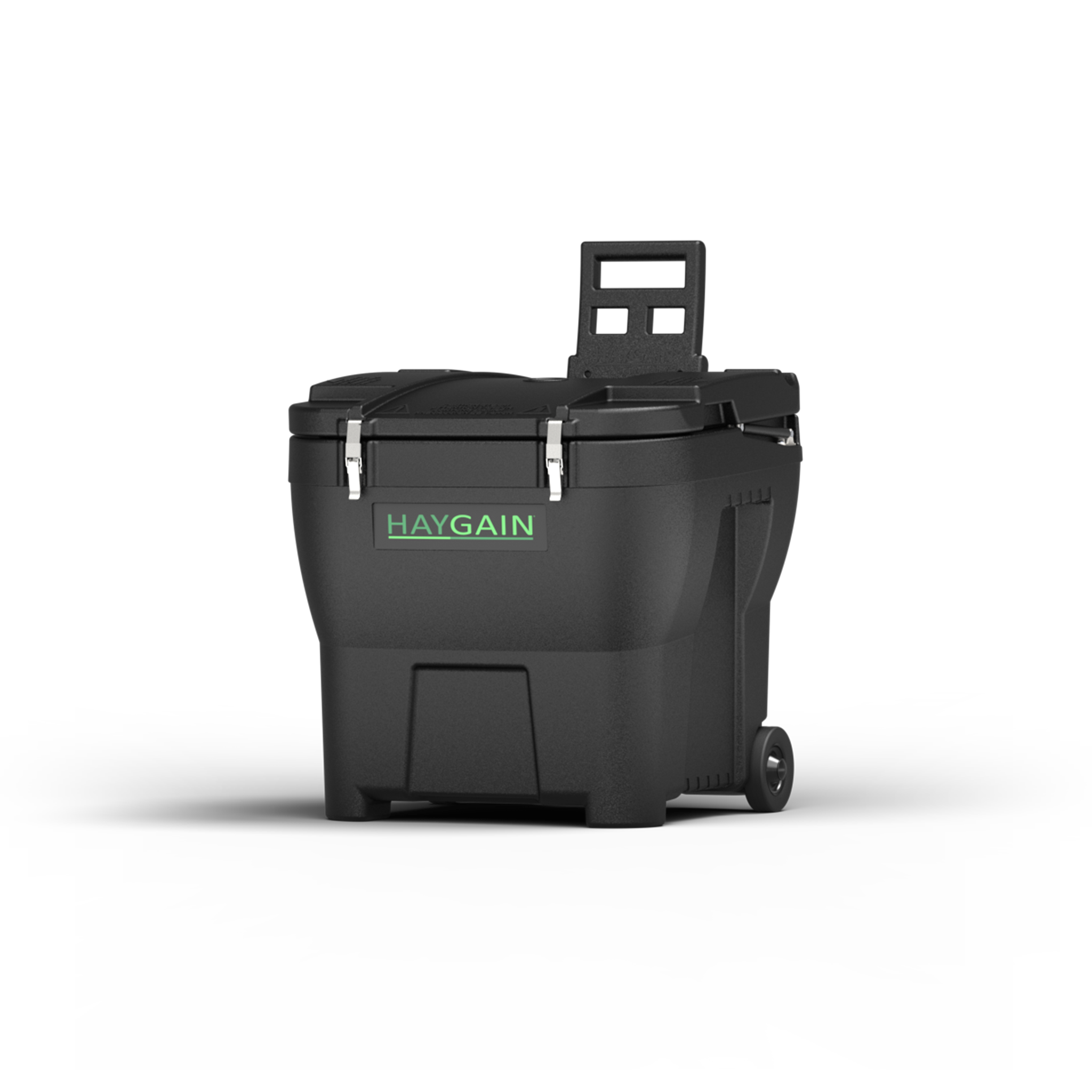Layman’s Guide to Reliable Horse Health Information
By Christa Lesté-Lasserre, MA
Want to know how to manage laminitis, what causes cribbing, when to wean a foal, why your horse bucks, or whether nutritional supplements work?
Just Google it. Easy, right?
Well, sort of. Certainly, within seconds, you’ll find plenty of horse health information. So much, in fact, that it’ll suddenly be raining information all over your screen, keyboard, lap, and floor, to the point that you’ll almost wish you’d brought some kind of virtual umbrella to shield yourself from the deluge.
Never in the history of horsemanship have horse owners had a greater wealth of horse-related information at their fingertips. While that sounds exciting—albeit a bit overwhelming—the reality is that more information does not necessarily mean more good information.
We’ve all had the experience of finding conflicting information online, often accented with particularly lively (to put it nicely) debates among social media users. Indeed, the internet is fraught with contradictions, especially when it comes to horse management.
With the seemingly endless choices of articles and videos begging to be viewed following every keyword search—not to mention the onslaught of information being thrown at us every time we open Facebook, Instagram, or TikTok—it can be challenging to decide what to click on, and what to skip.
Fortunately, readers can make good decisions about which resources can be trusted, provided they have some basic knowledge and skills about the world of equine resource publishing, for both scientific readers as well as non-scientific (lay) readers.
This article provides you with those basics so that you can navigate the internet more efficiently as you focus on quality, reliable sources that will ultimately lead to better health and welfare for your horse.

Cutting the Good from the Bad
Both good and bad resources can come across as knowledgeable, confident, and authoritative, making it potentially difficult to call out the bad resources. Fortunately, though, there are some simple green and red flags that can help you make those distinctions.
In my experience, I’ve found that good sources have at least three of the four green flags listed below—and they usually have all of them. By contrast, the presence of even a single one of these red flags always sheds considerable doubt on the trustworthiness of the publication.

Green Flags = Reliable Information Source
• Credentials. The majority of reputable science-related posts and publications—whether they’re meant for lay readers or professionals—include what sometimes looks like a whole slew of abbreviations after people’s last names, like PhD, DVM, Dipl. ACVIM, and many more.
Some—especially in the U.K.—use degree titles like Dr. and Prof. in front of the name instead. That’s not to show off; they’re meant to be a testament to the person’s qualifications for providing reliable information about the topic [1]. Granted, there are some serious media outlets that don’t use the titles since they bog down the text—but in that case they usually include a link to the speaker’s professional website, where you can find all those titles and a whole lot more.
(Note: Serious science journalists don’t always have degree titles after their names, but they always include interviews with knowledgeable people—and most of those people do. And while some speakers can be experts without academic titles, that’s rare, and titles really add weight to credibility.)
• References. Good information builds on previous good information; it’s the basis of making reliable conclusions. A solid media report often provides at least one reference to an academic publication to support the claims made in the report.
Solid academic publications provide a list of references [2]. Importantly, all those references should also be reliable! They should stand up to the same criteria for robustness as described in this list. A notable exception to the need for references is the case of feature articles in magazines and e-zines based on interviews with experts—but in that case, both the journalist and the experts should have a strong track record of reliability.
• Peer-review / editing. Even experts can say things that are unintentionally misleading, or even make mistakes sometimes. That’s why peer review is so crucial. Peer-review means that other experts have looked at the report and have given critical feedback for improvement before publication [3]. A peer-reviewed paper is one that appears online or in print after it’s been revised following peer review. Peers can be scientists or editors with science journalism experience.
• Photo credits. A really simple way to feel more confident about a media report is to see that line under the photo giving name credit to the photographer. Photos are artistic work that is protected under copyright law in most countries. But even when it’s not, it’s still good practice to acknowledge the contribution of the photographer [4]. Media sources that acknowledge the photographer are giving a clear sign of professionalism. 
Red Flags = Questionable Information Source
• Multiple pop-up ads. If you have to close three or four windows to get to the text, there’s a problem [5]. Reliable media may have advertisers, but their ads are more discreet.
• You have to keep clicking “next” to finish reading an article. Online pages that require multiple clicks to read the full text, page after page, are using you to refresh pages that multiply their page views and offer more advertising placements, increasing their incoming from paying advertisers hoping to sell you something.
• Poor writing style. Questionable reports often lack professionalism and good editing in their writing style. This one can be hard to spot for non-writers, but such articles might use lots of emotional language and dramatic claims, like “You’re not going to believe this!” and “This is just insane!” Or they can beat around the bush in the first several paragraphs, taking a long time to get to the point.
• Sentences in Bold, Words in ALL CAPITAL LETTERS. It’s normal to put headings and even subheadings in bold, because they work like chapter titles to divide up sections of an article. But when writers put certain whole sentences in bold (or highlighting, or underlining, or different colors) throughout their text or use phrases in ALL CAPITAL LETTERS to try to draw attention to them, this suggests sensationalism, and hence less professional writing [5]. (Of course, this does not apply to hyperlinks, which usually appear underlined and in blue.)
• AI-generated error messages. Artificial intelligence (AI) has become a highly competitive writer in the online world, but its work is highly unreliable. A new report reveals that there are at least 25 new websites per week that are entirely written by AI, to draw in revenues from advertisers. These “junk websites” can be very convincing and even have fake bios of fake writers. Fortunately, they also tend to bug sometimes, revealing their true artificial nature. Since they are largely written without human intervention, their AI-generated messages—like, “Sorry, I cannot fulfill this prompt”—get mixed into the text [6].
• Absence of any of the green flags above. Some publications might lack one of the green flags and still be reliable due to unusual circumstances—for example, if a known expert is the author. But if it’s missing all these points, it’s highly unlikely to be a reliable source.
Science-Speak vs Lay-Speak
Most reliable articles aimed at horse owners are written by journalists and equine behavior practitioners, and occasionally by nutritionists and professional trainers. It’s important to understand that in the vast majority of cases, these are not the people who carried out the research they’re writing about.
That’s not a bad thing. On the contrary, it’s a very good thing because these writers are usually quite skilled in interpreting complex science-speak.
Scientists generally communicate with each other in a way that’s, frankly, practically a language of its own—even with different organizational thought processes. That’s not so they can feel high-and-mighty; it’s just part of their profession and field, and it’s very important for the scientific method.
Researchers publish the reports of their work in academic journals like Journal of Equine Veterinary Science and Journal of Applied Animal Welfare Science. The articles are long, complex, often in very small print, usually lacking in attractive photos, full of numbers, charts, and figures, and of course written in heavy science-speak.
That’s not to say that horse owners and other lay readers aren’t capable of reading these academic articles. Of course they are. But doing so well requires patience, training, and experience [7]—just like learning French, Chinese, Java, equine body communication, or any other unfamiliar language.

Behind the Scenes of Scientific Publications
Regardless of whether or not owners read academic journals, it can be helpful to know a bit about how research publications work. Most journals have a fairly pricey paywall—although many are accessible through libraries and academic institutions like universities. However, some journals offer scientists the option of paying a fee—usually several thousand dollars—to make their papers open-access, meaning it’s free for readers. It’s a hefty price tag, but scientists sometimes choose this option to make their work more visible and share their findings more broadly.
PLOS ONE is one popular free-access academic journal that provides high-quality research papers on such a system [8].
Unfortunately, however, the scientist-pays-the-fee system has opened the door to other publishers eager to respond to a high market demand to publish. Some academic journals have gained a reputation for churning out scientific publications in high numbers with little to no peer-review process.
Lacking peer review and editing, the papers published in these journals can lack the rigor of higher-quality publications and have been the subject of a growing amount of criticism. In March 2023, the Web of Science delisted dozens of such journals from its Master List of quality research publications [9].
Where to Find Good Horse Science for Lay Readers
A good way for owners and other lay readers to get clear, reliable, accessible information is to subscribe to reputable equestrian and horse health magazines and online content. The Horse: Your Guide to Equine Healthcare is a top resource that offers a significant amount of free content online with simple registration, and additional paid content with a subscription.
Horses and People, based in Australia, is another strong resource with primarily behavior content written in a friendly way with direct collaboration with researchers. Online content is free, and the paid print edition provides additional articles.
Fran Jurga keeps a very good, free-access, science-based hoofcare website called The Hoof Blog, and behaviorist Justine Harrison provides reliable, evidence-based news and discussion on her Facebook page.
Certain horse-industry companies also offer good scientific content, written by independent journalists, available as free online or downloadable resources. Providing owners with reliable, helpful information is part of a marketing plan that draws readers to their websites as an honest and knowledgeable resource, and much of their content is not directly related to the products and services they offer.
Haygain, for example, provides well-documented equine science papers about horse health and welfare on a variety of topics, written for lay readers. Scoot Boots publishes blogs and articles specifically about hoof care, featuring input from independent experts.
In general, of course, it’s always important to watch out for bias (see below).
Is it Biased?
Bias occurs when information is slanted to promote a product or an idea. When there’s bias, the real scientific results are likely to get construed, making any claims or conclusions in the content unreliable.
A common example is “research” that’s published on websites for equine nutritional supplement companies. A site might state that 95% of horses fed that supplement had improvement in their hooves/coat/digestive health/energy levels/behavior/etc within 4 weeks of supplementing and then refer to a study that was carried out to prove it. But was that study published in an independent academic journal, or only on the company’s website? Was the research performed by the company’s employees, or by researchers from other institutions? It’s important to find out where these kinds of claims come from, and how biased the research behind them is.
Identifying bias can be pretty easy—starting with company websites like the example above. If the website doesn’t list independent references for claims that make their product or service look good, it’s safe to assume it’s biased.
Bias is also easy to spot in reputable consumer magazines. It’s important to understand that these magazines themselves are not biased. However, they are usually financially supported by advertisers who provide their own, paid content in the magazine. By nature, advertising content is biased—because the point is to convince people to buy the product or service. But because these magazines are unbiased and reputable, they make it easy to distinguish between their own, independent content, and the advertising content.
Advertising content generally has a different look compared to the other articles in the magazine, with different font, columns, layout, and coloring. And if it includes a lot of text to sort of look like an article, there will be a phrase somewhere on the page specifically stating that this is advertising—helping readers identify potential bias.
In scientific publications in reputable academic journals, potential biases are always declared at the end of the text, usually just before the references.
Not all potential bias leads to true bias, though. For example, an employee of a nutritional supplement company might be one of the five researchers collaborating on a study about the effects of a supplement. Or the company might have provided partial funding for the study. If the majority of the researchers are not associated with the company, though, bias is unlikely. Even so, the researchers will be transparent about declaring the potential bias in their publication.
Biases might be more difficult to spot in unreliable information sources (see above), however. That’s because such sources don’t usually have much transparency. Avoiding unreliable sources will help prevent accessing biased material.
Wrapping Up
Opening up your internet browser can lead to a tremendous downpour of horse-related content online, but that doesn’t mean you have to get swept up in the flood. With good basic knowledge about the online publishing world, you can equip yourself with a virtual “umbrella” to keep you from getting drenched with bad information while selecting a handful of good information sources.
These few tried-and-true reliable resources will certainly offer you the quality information you need to manage your horses with their optimal health, welfare, and happiness in mind.
About the Author - Christa Lesté-Lasserre has published more than 2000 articles about the science of horses’ health and behavior based on the latest information in reliable equine research. Having learned to develop the horse-human relationship and horse training with her own pony and, later, her own horses at home in Texas, Christa acquired undergraduate and graduate degrees in journalism and writing, with focal studies in advanced sciences from Baylor University in Waco, Texas, the University of Mississippi at Oxford, and the Université René Descartes in Paris, France.
Christa currently owns a Trakehner mare, Sabrina, foaled in Germany, and her 13-year-old son, Solstice, foaled in France. Together, the trio have worked in dressage and eventing but found that they prefer traveling together, discovering the world through long-distance adventures.
When Christa isn’t writing about horse science, she’s writing about the science of dinosaurs, insects, humans, and even buildings. Otherwise, she’s raising her three kids, or she’s working on the various fiction and non-fiction books she plans to publish in the near future. Follow Christa at www.christalestelasserre.com.
References
[1] University of Washington University Libraries, "FAQ: How do I know if my sources are credible/reliable?," 31 March 2023. [Online]. Available: https://guides.lib.uw.edu/research/faq/reliable.
[2] University of Birmingham, "Why reference?," 2023. [Online]. Available: https://intranet.birmingham.ac.uk/as/libraryservices/library/referencing/icite/why-reference.aspx. [Accessed 25 August 2023].
[3] S. T. A. K. Kelly J, "Peer Review in Scientific Publications: Benefits, Critiques, & A Survival Guide.," EJIFCC, vol. Oct 24;25(3), pp. 227-43, 2014.
[4] C. Newberry, "Image Copyright on Social Media: Everything You Need to Know," 19 July 2022. [Online]. Available: https://blog.hootsuite.com/understanding-image-copyright/. [Accessed 25 August 2023].
[5] C. G. S. o. Journalism, "Misinformation and Disinformation: Thinking Critically about Information Sources," 23 January 2023. [Online]. Available: https://library.csi.cuny.edu/c.php?g=619342&p=4376665. [Accessed 23 August 2023].
[6] T. Ryan-Mosley, "Junk websites filled with AI-generated text are pulling in money from programmatic ads," 26 June 2023. [Online]. Available: https://www.technologyreview.com/2023/06/26/1075504/junk-websites-filled-with-ai-generated-text-are-pulling-in-money-from-programmatic-ads/. [Accessed 25 August 2023].
[7] J. Kelly, "ScienceSpeak: Common vs Technical Science Language," 20 August 2023. [Online]. Available: https://www.phoenix.edu/content/dam/edu/media-center/doc/whitepapers/082023-science-speak-jkelly.pdf. [Accessed 25 August 2023].
[8] PLOS ONE, "Journal Information," [Online]. Available: https://journals.plos.org/plosone/s/journal-information. [Accessed 25 August 2023].
[9] J. Brainard, "Fast-growing open-access journals stripped of coveted impact factors," 28 March 2023. [Online]. Available: https://www.science.org/content/article/fast-growing-open-access-journals-stripped-coveted-impact-factors. [Accessed 25 August 2023].




















